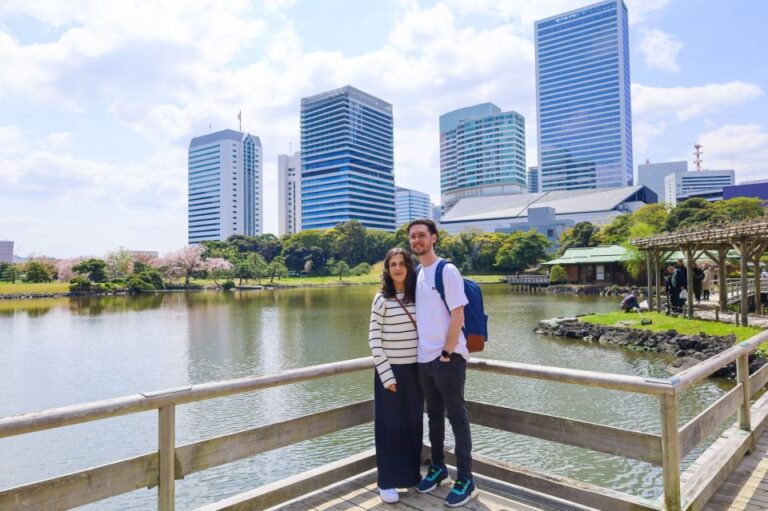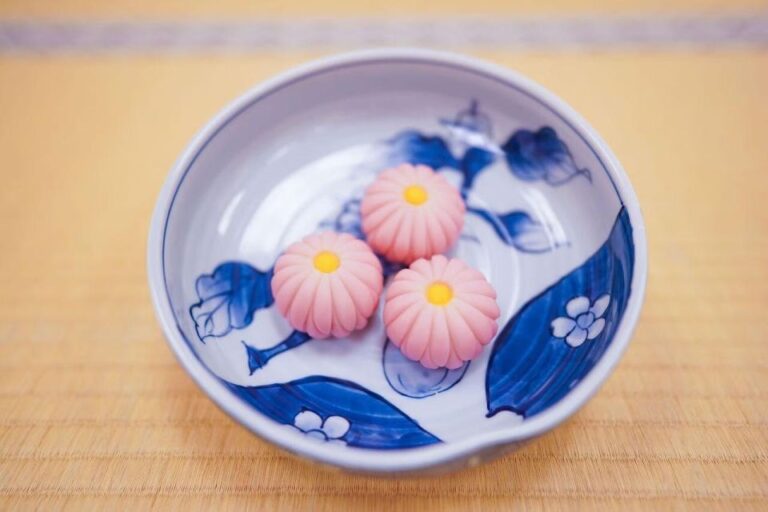Shibuya Tokyo is an iconic part of Tokyo that has a stack of cool and quirky things to see and do.
It’s known as the fashion and entertainment hub of Japan, full of trendy boutiques, delicious restaurants, and fun nightlife spots.
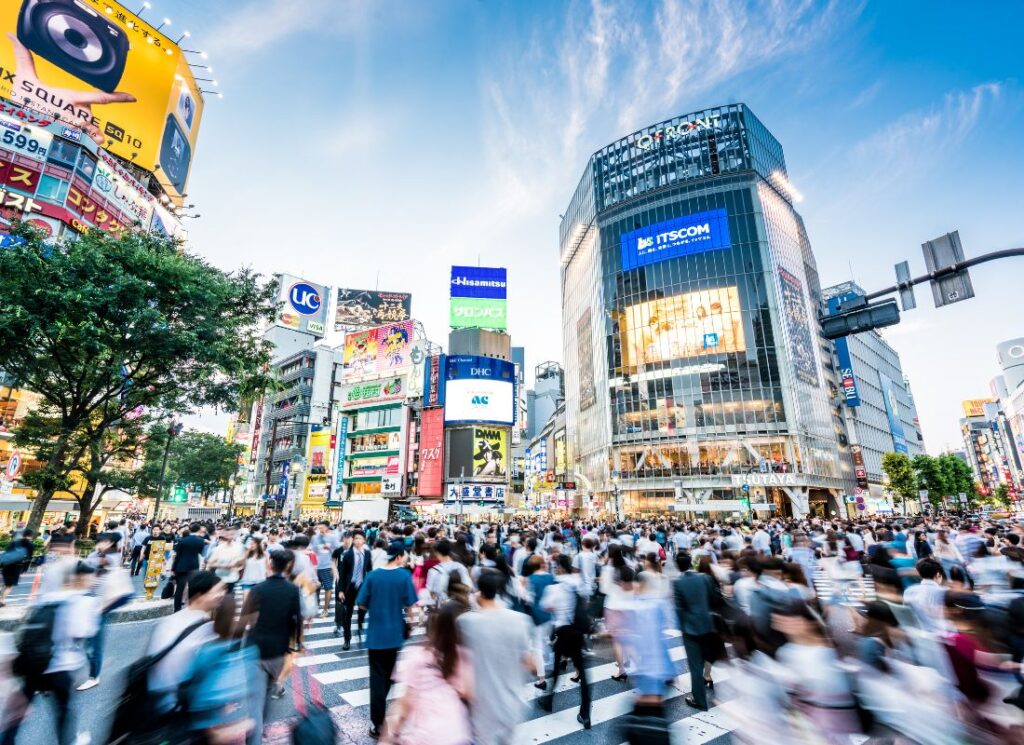
With its vibrant streetscapes like Hachiko Square made famous in several films scattered around town together with a selection of historical temples gracing the landscape – Shibuya offers plenty to explore.
Visit Shibuya Crossing—the busiest intersection in the world–and watch locals navigate their way through swathes of people or wander up Omotesando towards Meiji Jingo, right next to Yoyogi park.
Is Shibuya Worth It?
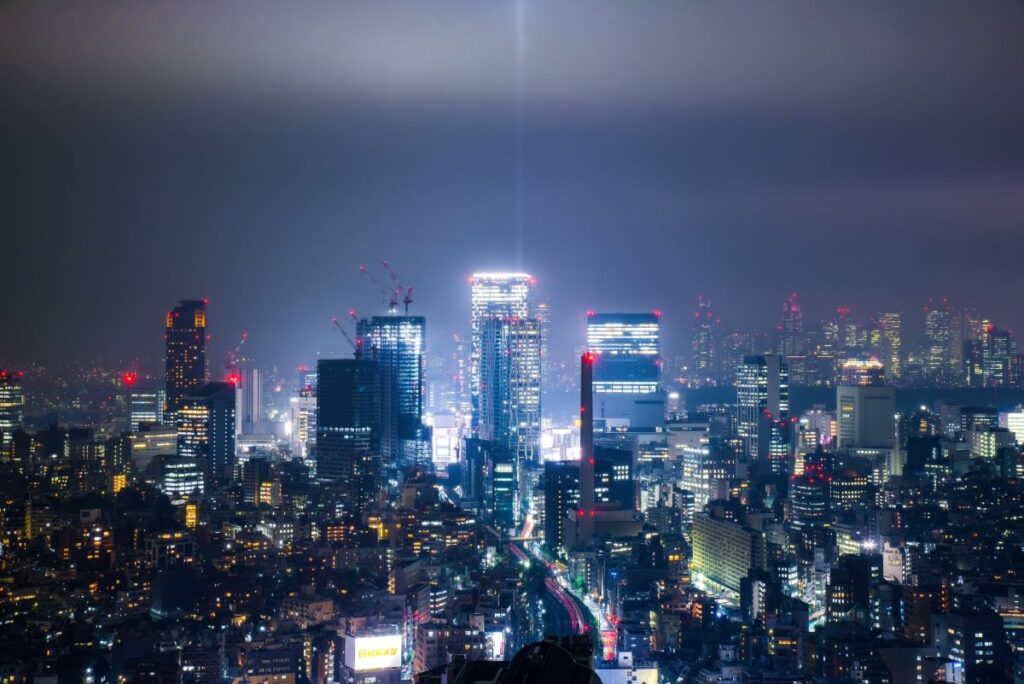
The answer to that question really depends on what you’re looking for in a vacation.
Shibuya is one of Tokyo’s most exciting entertainment districts, and it has something for everyone—from world-famous shopping malls and delicious restaurants to stylish nightlife hotspots and iconic tourist attractions like the neon ‘Scramble Crossing.’ So if you want an action-packed city break full of buzzing energy, then absolutely – Shibuya is worth visiting.
How To Get To Shibuya By Train
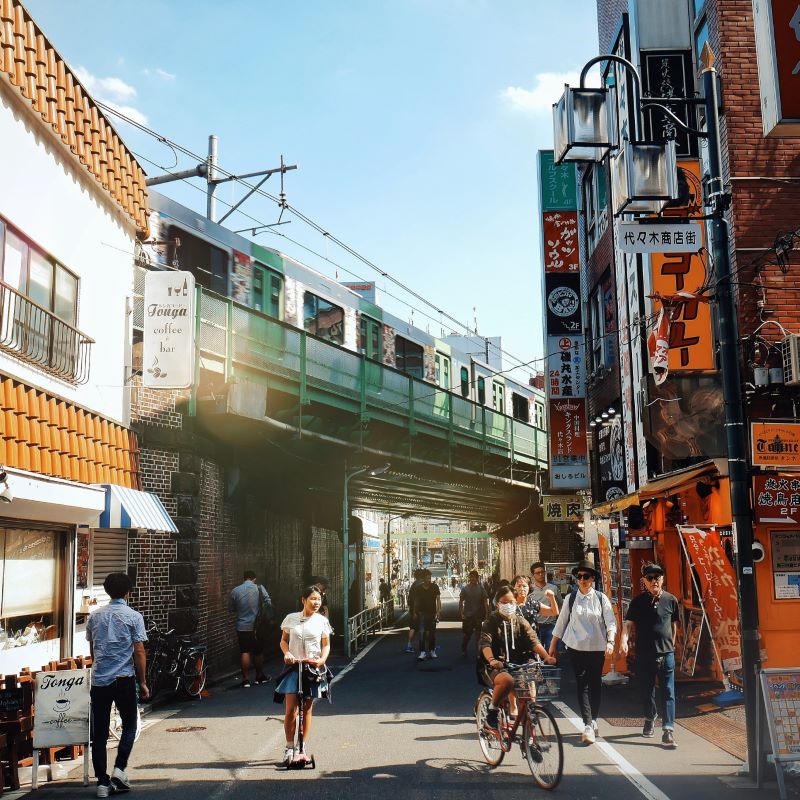
Shibuya is easily accessible by train from a variety of stations and locations.
From Tokyo Station, take the JR Yamanote line to Shibuya Station.
Alternatively, you can also get there on other lines like the Keihintohoku Line which departs from Ueno station or via Ginza Line at Asakusa Station.
It is even more convenient if users have an IC card since transferring across different rail companies will be easier than buying individual tickets each time they board a new vehicle/line going in their direction.
Now that you have made it here. Check out some of the best things to do in Shibuya Tokyo.
Explore Omotesando
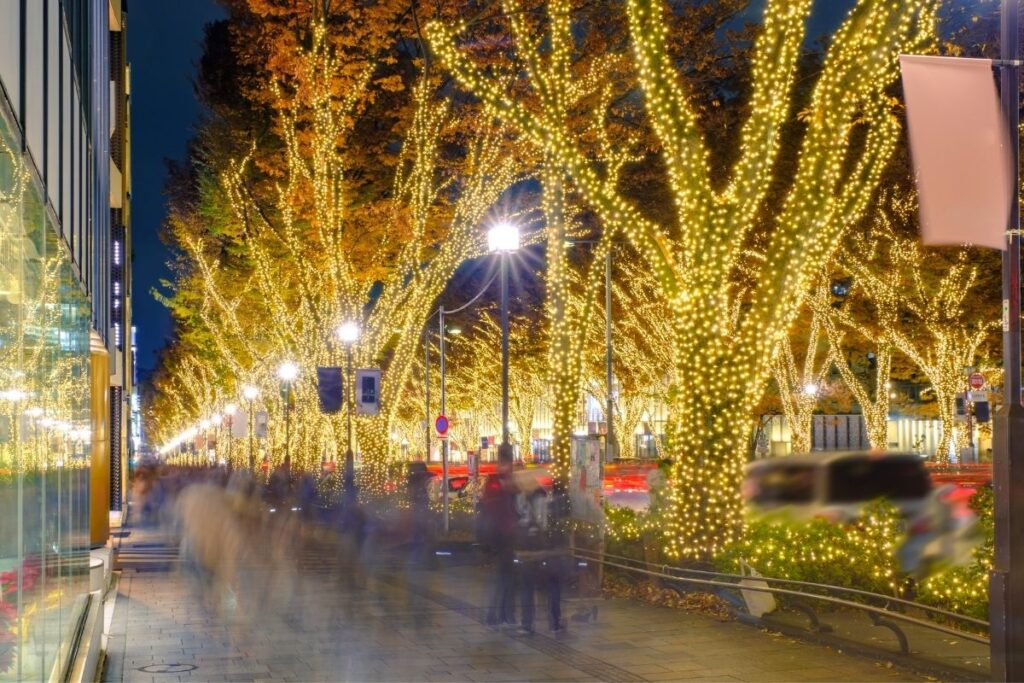
Omotesando is a shopping district in Tokyo known for its mix of international luxury brands and hip indie boutiques.
It’s also well-known as one of Japan’s most fashionable places with lots of unique cafes, restaurants, and galleries to visit.
Omotesando Hills has been hailed by Architectural Digest as an “architecture paradise,” boasting four wings designed by internationally acclaimed architects such as Toyo Ito and Tadao Ando.
The nearby Cat Street offers vintage clothing shops from the likes of Billy Harvest & Co., Kitson Kid NYC Garage, etc – letting you find some truly rare items to bring home.
So if you’re looking for something special or just want to experience this vibrant neighborhood – make sure that Omotesando is on your next trip itinerary.
Walk Around Harajuku
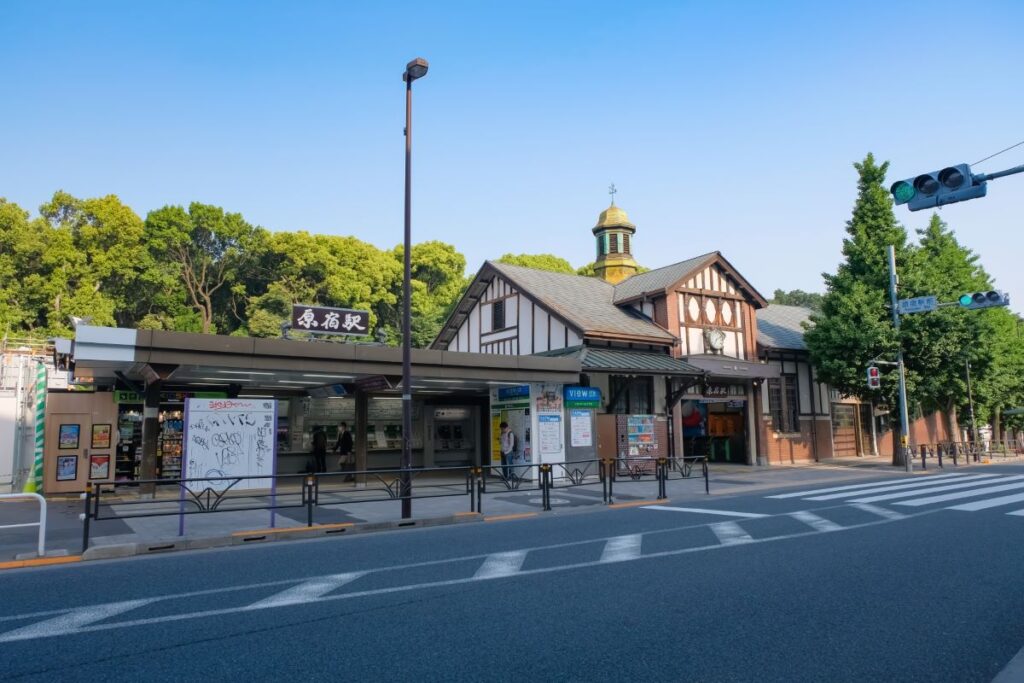
Explore Harajuku is a Tokyo district renowned for its eclectic fashion, kawaii culture, and vibrant street life.
It’s the birthplace of unique Japanese trends ranging from colorful cosplay outfits to crepe-topped ice cream.
This fashionable hub offers shops full of outrageous finds as well as galleries exhibiting contemporary art.
Visitors also have an opportunity to dine in one of many themed cafes or explore popular tourist spots such as Takeshita Street, Omotesando, and Meiji Shrine—all part of this amazing area’s must-see list enjoy on your visit there.
Cross The Shibuya Scramble
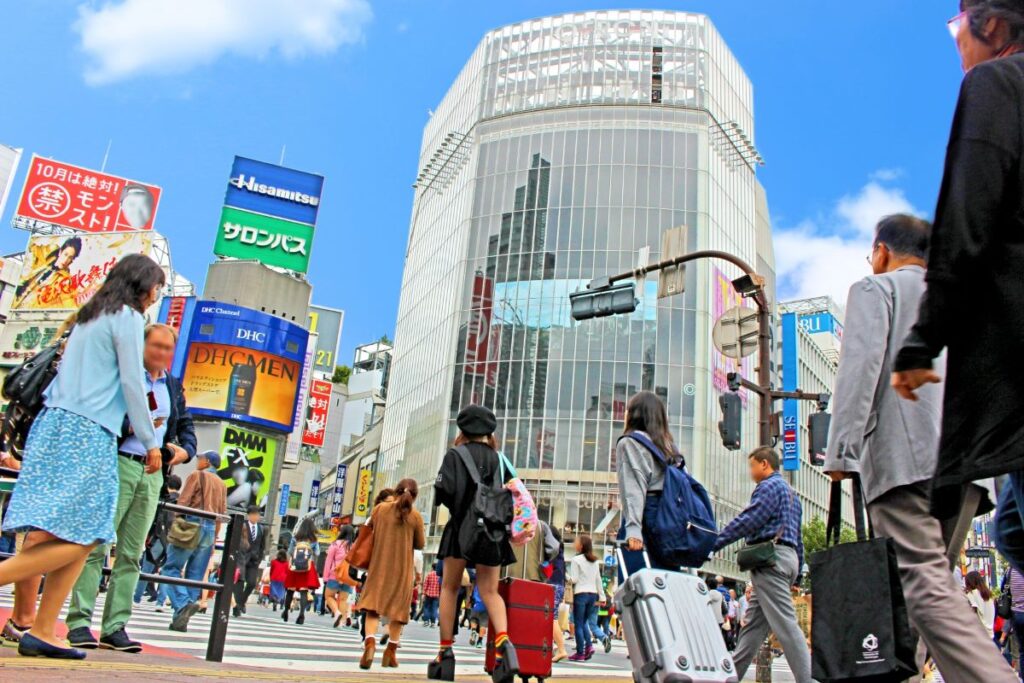
Shibuya Crossing, also known as Shibuya Scramble is a light-filled intersection in Tokyo Japan.
This famous crossing can be seen on postcards and its reputation for large crowds has made it one of the world’s most recognizable intersections.
At peak times this scramble looks like an ocean of pedestrians: over 2,500 people flood into each side during any given two-minute pedestrian phase.
It’s not uncommon to see buses transporting shoppers across the street while cyclists slip through narrow gaps between clusters of commuters trying to cross at once—it truly should come with a warning label.
The amazing thing about Shibuya Crossing is that despite how chaotic it appears there are no collisions or confusion due to well-planned synchronized lights which keep everyone safe – talk about orderly chaos.
Shibuya Center-Street
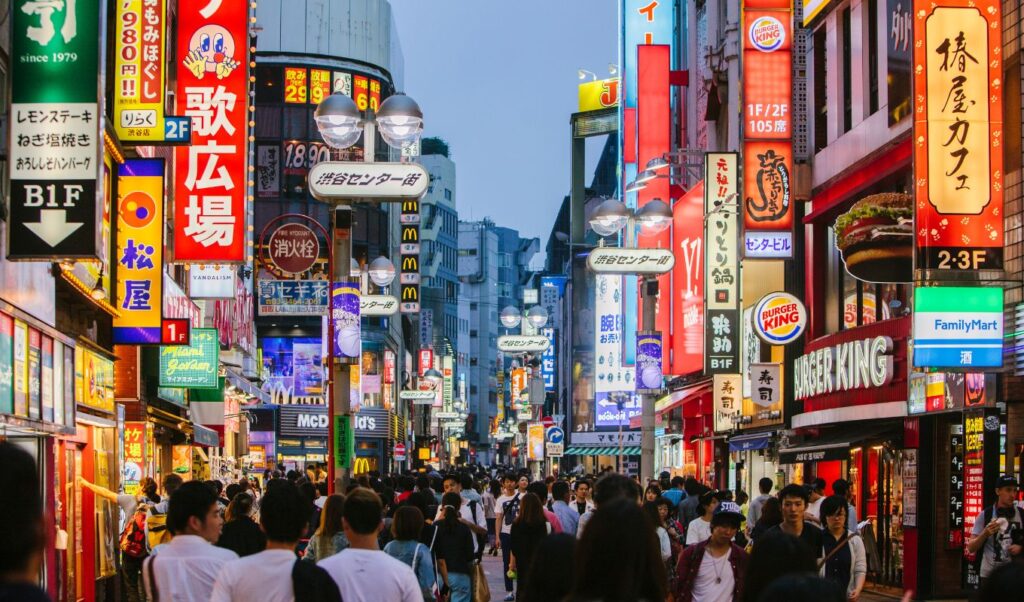
Shibuya Center Gai is a bustling, vibrant shopping and entertainment area in Tokyo’s Shibuya district.
It is known for its bright lights, street performers, and trendy youth culture.
Here you’ll find everything from vintage shops to modern boutiques and cafes – all with something different to offer visitors.
The famous statue of Hachikō the faithful dog has become an iconic symbol of this popular destination; he used to wait here every day for his beloved owner until his death in 1935.
People come far and wide – both locals & tourists alike-to take part in the buzzing atmosphere that gives life to Shibuya Center Gai each day.
Museum of Yebisu Beer
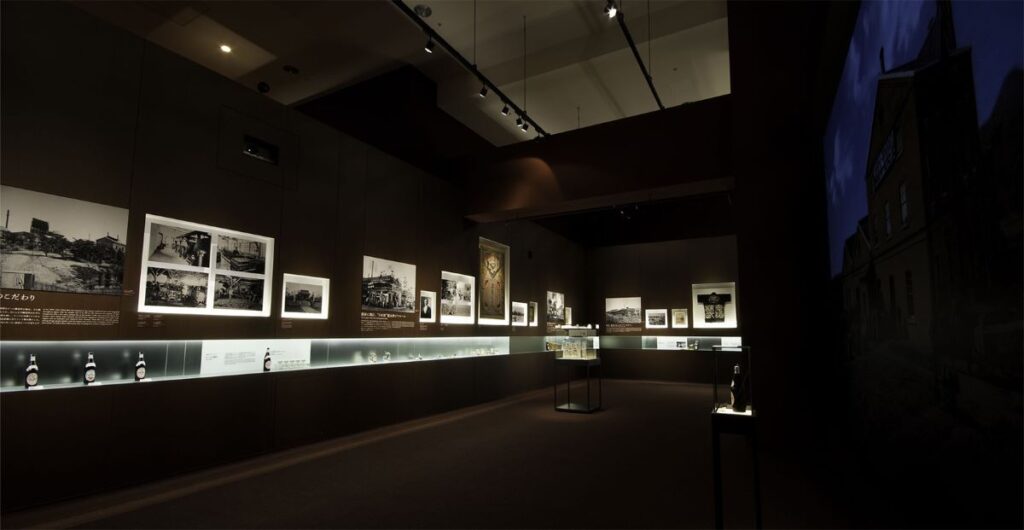
The Museum of Yebisu Beer Shibuya is a great place to explore the fascinating history behind Japan’s oldest beer.
Learn about their unique brewing process, and check out interactive exhibits like the “beer tasting game”.
Plus you can try exclusive samples of rare varieties.
Fun fact: each year they participate in hop harvests around Germany – so enjoy some German-style beers on your next visit.
They also have an impressive rooftop garden that grows many specialty ingredients used for brewing – creating truly fresh flavors every time.
Nezu Museum
The Nezu Museum, located in Tokyo’s Minato ward and nestled among the city’s traditional streets, has been a beloved cultural institution since its inception in 1941.
Developed by former Japanese diplomat Kaichiro Nezu as an ode to his passion for Asian art, this unique museum combines dynamic modern architecture with inspiring gallery experiences.
Alongside its permanent collection of over 7500 works of diverse styles from across Asia – not limited to Japan itself – visitors can also explore temporary exhibitions on both historic masterpieces and contemporary artistic movements alike.
With specialized teahouses serving up fine matcha tea inside the grounds too, one is sure to be charmed by all that there is at the ever-elegant Nezu Museum.
Meiji Jingu
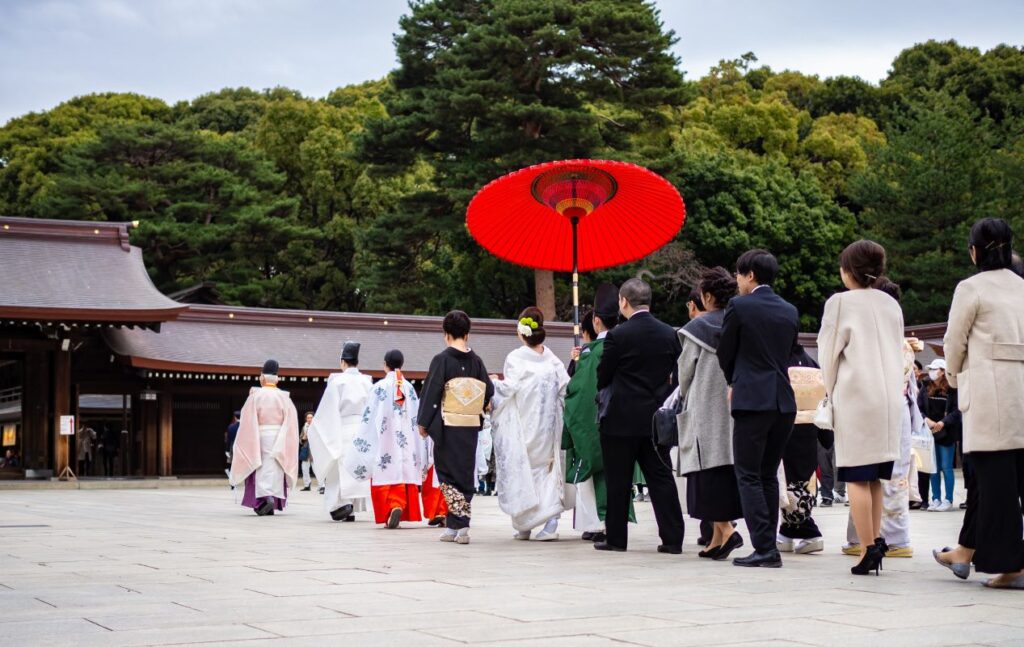
For those seeking a bit of cultural charm, Meiji Jingu is the place to visit.
This stunning shrine located in the heart of Tokyo honors Emperor and Empress Meiji who were important figures during Japan’s period of modernization over 100 years ago.
The grounds include two 175-foot tall torii gates as well as a peaceful forest full of iris gardens and sake barrels that guests can explore for hours.

In addition to sightseeing, visitors are encouraged to take part in traditional Shinto rituals like writing wishes on wooden tablets with ink or offering prayers at one of many shrines within the complex.
Plus there are always fun festivals happening throughout the year where you’ll find everyone from samurai warriors to Japanese taiko drummers making appearances.
d47 SHOKUDO
If you’re looking for a fantastic Japanese eatery in Tokyo, look no further than d47 SHOKUDO Shibuya.
It’s the perfect spot to get your sushi and ramen fix.
Dig into dishes like their delicious Pork Ramen or Sashimi Donburi set meals.
Plus, don’t forget about their unique dessert menu; try out treats such as Green Tea Soft Serve Ice Cream with Red Beans or Matcha Tiramisu Cake.
Not only are the flavors amazing but at d47 SHOKUDO they use premium ingredients sourced from local farmers markets – making each dish truly one of kind.
So come visit them today and indulge in some exquisite authentic fare that’ll make your taste buds happy.
The Shoto Museum of Art
The Shoto Museum of Art in Shibuya, Tokyo offers a fantastic display of modern art from both Japanese and international artists.
This museum is unique as its collection includes works from renowned masters such as Monet and Picasso alongside traditional Japanese sculptures.
Visitors can also uncover hidden gems within its archives – rare scrolls featuring ancient calligraphy or kimono fabrics adorned with intricate designs.
The gallery’s popular café creates an intimate atmosphere to enjoy the surroundings while sipping on handcrafted coffee blends made by local roasteries.
Plus, there are often lectures given on weekends that cover topics like contemporary trends in art history making it clear why this establishment has become one of Japan’s premier spots for appreciating culture.
Yoyogi Hachimangu
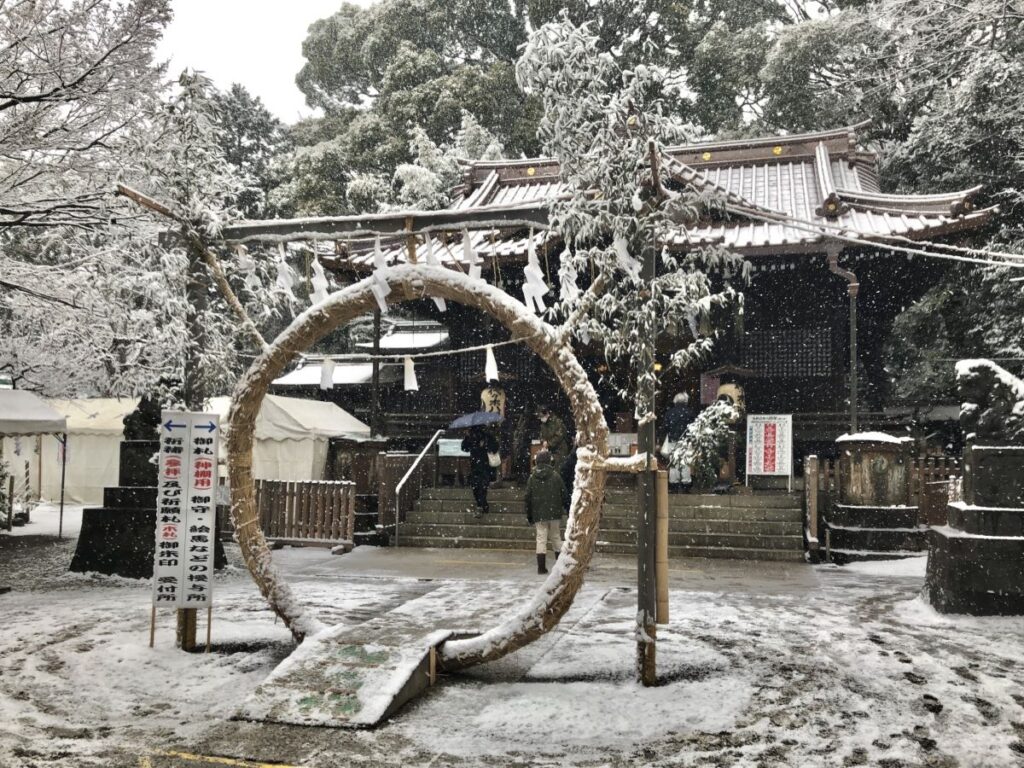
Yoyogi Hachimangū is the oldest Shinto shrine in Tokyo.
It was built during the Edo Period (1603-1868) by Tokugawa Iemitsu, the 3rd shogun of Japan to honor and worship Taira no Masakado who played a big role in gaining independence for Imperial Japan from China.
Interesting facts include that it has two separate gates – Ishiwara-mon Gate located at Harajuku Station being one of them, which serves as its main approach used today; inside you can find sacred treasures related to ancient warriors such as swords & armoury pieces.
Furthermore, Yoyogi Hachimangu holds several festivals throughout each year like Setsubun Festival around February and their grandest event “Summer Grand festival” every August 17th with many traditional Japanese ceremonies taking place accompanied by parades featuring people wearing samurai garments.
Hachikō Memorial Statue

Hachikō Memorial Statue is an iconic monument located in Shibuya, Tokyo.
This statue commemorates the legendary Akita dog that used to meet his beloved master every day at the train station for nine years after he passed away.
Hachi would wait faithfully until his owner returned home from work and never gave up hope despite being let down time and time again.

Today visitors of the memorial can take a photo with the pup’s bronze likeness or even pick out special treats such as mochi-rice biscuits shaped like Hachi’s silhouette.
Many Japanese citizens consider him a symbol of loyalty, friendship, perseverance and dedication making this one popular spot worth visiting.
Shibuya SKY
The Shibuya SKY Observation Deck offers some of the best views in Tokyo.
From this amazing bird’s eye vantage point, you can see five different ward areas – Minato, Chuo-ku, Shinjuku-ku, Meguro-Ku and Setagaya Ku – as well as landmarks such as Mt Fuji on a clear day.
You’ll also be treated to shimmering night views that change with each season; city lights twinkle like they were stars projected onto the dark canvas below.
Whether it’s during sunset or at midnight when everything glimmers from above – there is nothing quite like experiencing all these breathtaking sights for yourself.
SHIBUYA 109
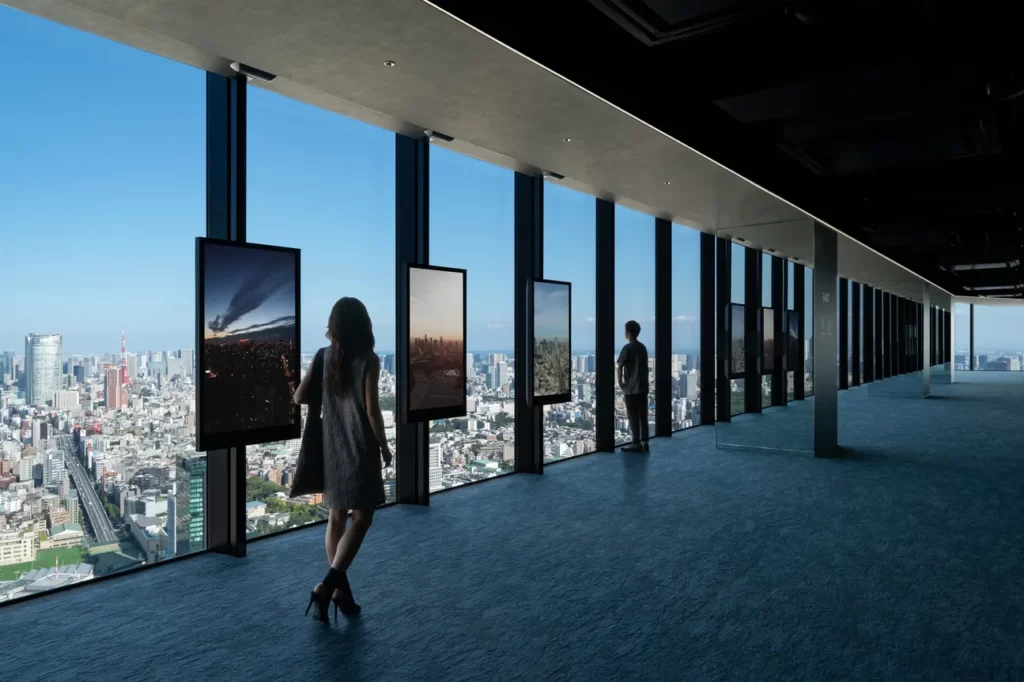
Shibuya 109 is a popular shopping mall situated in Tokyo, Japan.
It houses around 100 of the most stylish fashion stores catering to young women and men featuring trendy clothing styles from across Asia.
This building also contains restaurants, professional salons as well as beauty related services like one-stop nail & spa parlors too.

Since its opening in 1979 it has been home for many different fashion trends that have spread throughout not just Japan but all over the world such as “harajuku” street style which can still be seen today amongst people who visit Shibuya109 or live close by.
The youthfulness atmosphere within this place makes anyone feel energized when visiting due to so much happening inside with unique shops selling everything you need at reasonable prices making budget shoppers happy while others searching for luxury brands are sure to find them here too.
If there’s anything else missing then don’t worry because outside offers plenty more options
Yoyogi Park
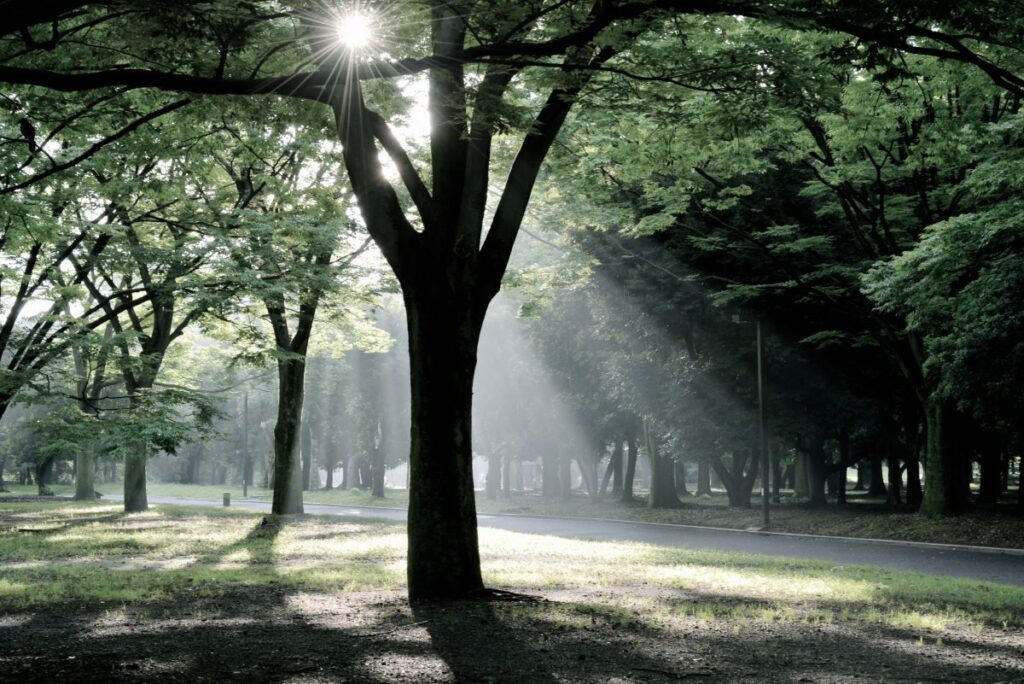
Yoyogi Park is one of Tokyo’s most beloved outdoor retreats, located in the center of bustling Shibuya.
This sprawling green space encompasses 45 hectares and contains a plethora of attractions including meadows and woods, ponds, flowerbeds and fountains.
On any given day you can find locals enjoying picnics under cherry blossoms or families walking their pet dogs along winding pathways through the park grounds.
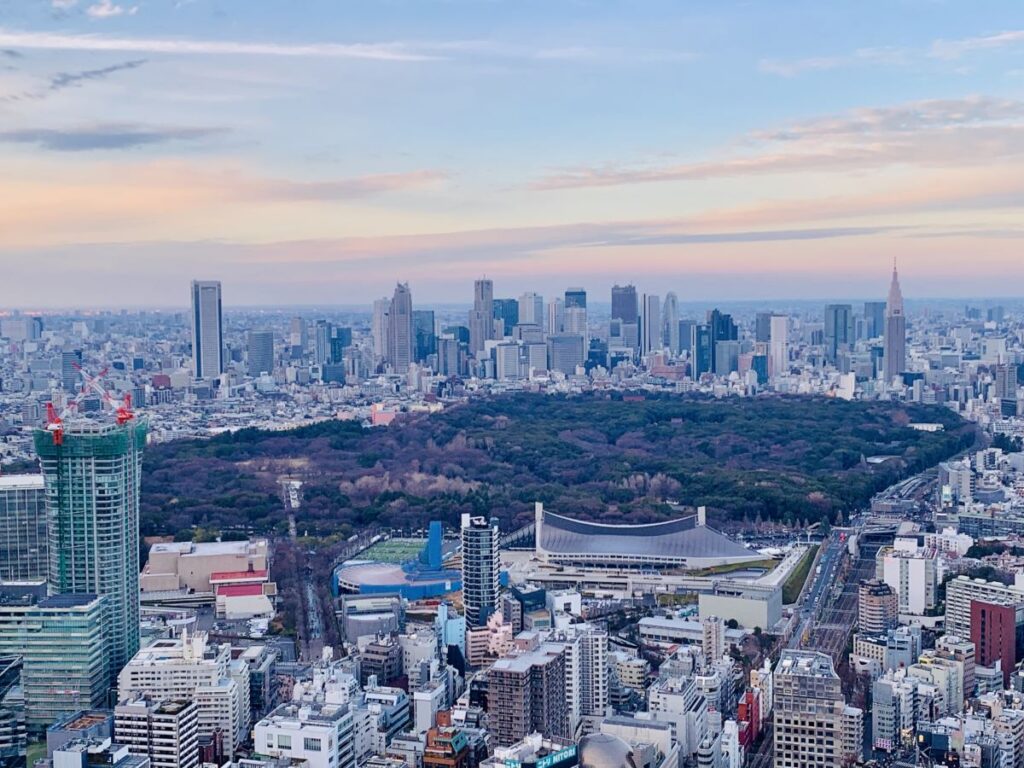
Yoyogi Park also boasts some incredible historical sites like Hokubaibai-Jinja Shrine where an ancient 500 year old camphor tree stands as well as a small section dedicated to honoring fallen US soldiers who lost their lives during World War II known as Meiji Jingu Gaien Ichiwarizuka Memorial Monument.
Whether lounging around on sunny days or immersing yourself into Japanese culture with traditional festivals held throughout the months — Yoyogi Park has something for everyone
Meiji Jingu Gaien
Meiji Jingu Gaien is one of Tokyo’s most famous hotspots.
It’s a large outdoor plaza where religious, cultural and sports events are frequently held.
The main feature at Meiji Jingu Gaien is the National Stadium which was built for the 1964 Summer Olympics in Japan and hosted the finals of the 2002 World Cup Football Championship.
This beautifully landscaped park also houses two giant Samurai statues guarding its entrance called “Tachibana-Ginzaburo Kamiyashiki no Torii”.
Other attractions include a peaceful pond, several museums exhibiting ancient artifacts from all around Japan as well as quaint cafes nearby to relax with coffee or tea after touring this historical shrine complex.
Cat Street In Harajuku
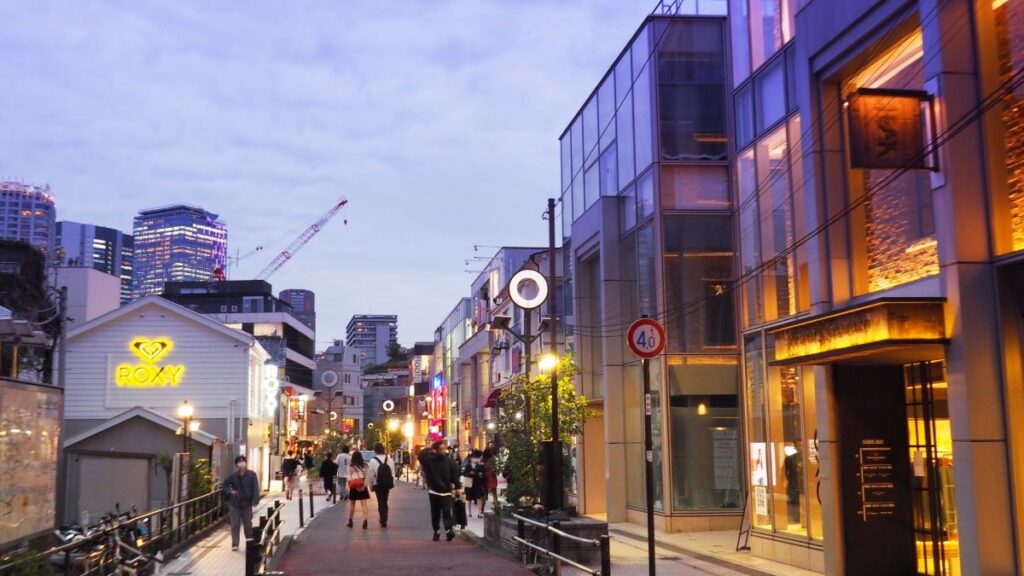
Cat Street in Harajuku is renowned for its quirky vibe and awesome fashions.
It’s no surprise that cats are loved here; from cute cat-shaped snacks to kitschy kitty souvenirs – there’s something for every kind of ‘cat lover’.
The street itself also has a unique atmosphere – with bright neon lights, café terraces filled with fashionable folk enjoying their time together, and even international fashion stores catering to the trendiest tastes.
On Cat Street you can find anything your heart desires…or four paws could wish for.
From trendy apparel to tantalizing treats – it’s one purr-fect place you don’t want to miss out on.
Takeshita Street
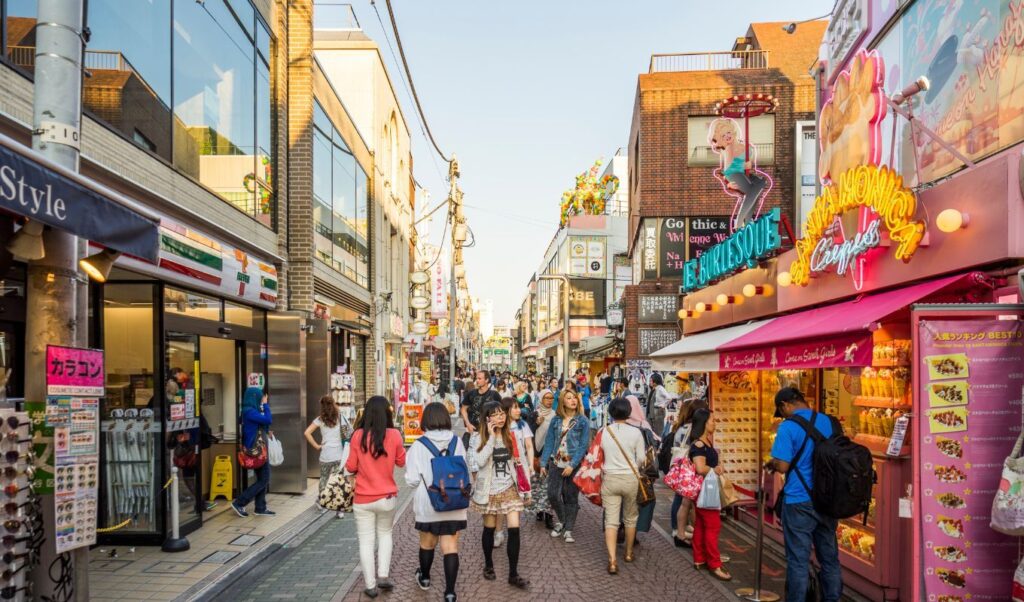
Takeshita Street in Tokyo’s Harajuku district is the epicenter of Japan’s kawaii culture, an area that overflows with unique fashion and sweet treats.
This legendary shopping street features almost 100 boutiques and eateries selling quirky items like funky sunglasses or flower-topped ice cream cornets.
Visitors can sample rainbow cotton candy, sip on bubble tea, and watch a performance parade as Hello Kitty lookalikes sashay down the pavement – all brought alive by pulsing techno tunes that blast from every storefront.
A visit to Takeshita Street isn’t complete without witnessing its full spectacle during Halloween when costume-clad teens flock for photoshoots and impromptu cosplay parades take over the streets.
Dogenzaka
Dogenzaka is a vibrant street in downtown Tokyo.
It’s named after Dōgen, the founder of Zen Buddhism and it was once home to samurai residences from the Edo period.
Nowadays, you’ll find plenty of trendy stores, restaurants and nightlife spots as well as arcades where people can enjoy video games like Pachinko or Taiko drums simulations.
Traditional Japanese festivals such as Tanabata matsuri take place every summer here.
After dark comes alive with brightly lit neon signs – this makes for an unforgettable experience not just for tourists but also locals alike.
Shibuya Nonbei Yokocho
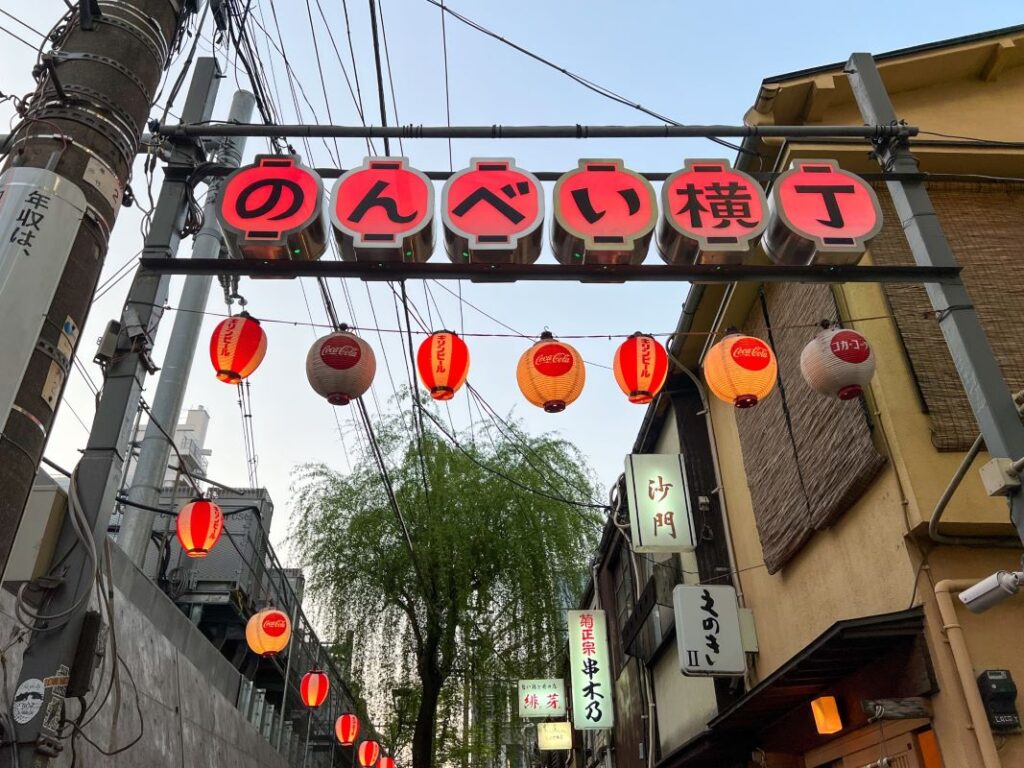
Shibuya Nonbei Yokocho is a nostalgic, laid-back area with narrow alleyways.
It’s one of Tokyo’s best places for small bars and unique restaurants.
The street stalls offer all sorts of goodies to snack on – from takoyaki balls to yakitori skewers.
You can also find quirky souvenirs– why not pick up an anime figure or two? After dark the coziness gets kicked up a notch, as yatais (mobile food stands) line the alleys serving late night delights like ramen noodles and tempura dishes until daybreak.
Step into this part of Shibuya if you’re looking for some true local charm in Japan.
Shibuya Station
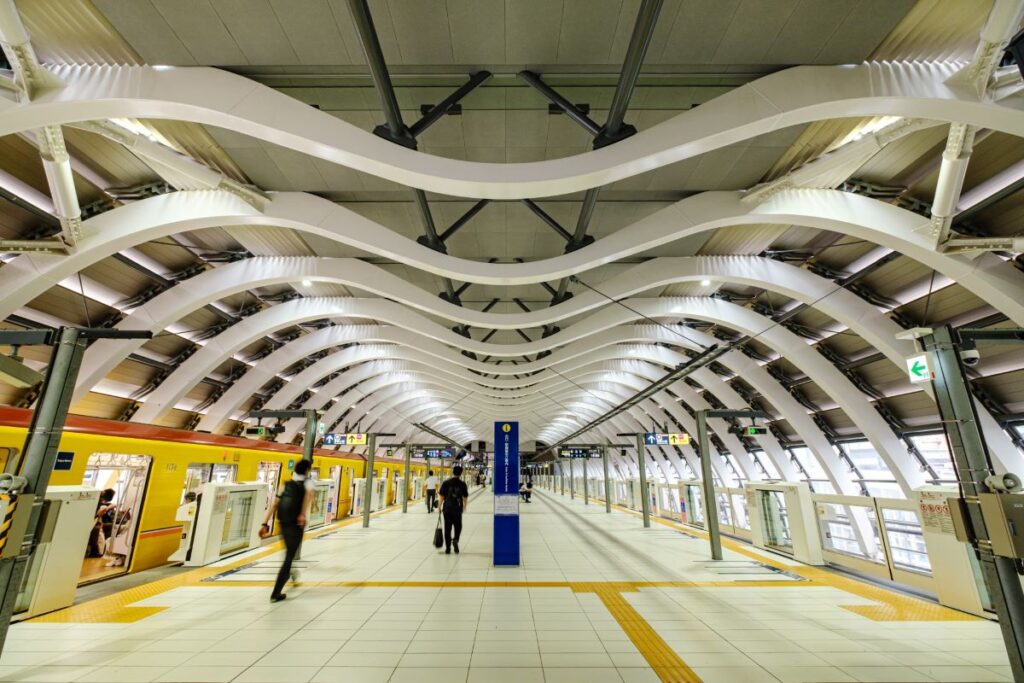
Shibuya Station is a major hub of Tokyo.
The station sees an average footfall of 3 million people on weekdays, making it one of the busiest stations in Japan and the world.
It consists of several railway lines such as the JR Yamanote Line, Tokyu Corporation Lines like Den-en-Toshi Line.
19 different platforms for passengers to board make this complex gigantic network layered beneath the Shibuya cityscape mystifying.
Furthermore, its iconic Hachiko Statue is known worldwide for being associated with loyalty and love as it pays homage to the faithful dog ‘Hachi’ who used to wait here every day decades ago even after his owner’s death until he passed away himself 9 years later.
Spain-zaka Slope
The Spain-zaka Slope in Shibuya, Tokyo is an iconic steep street lined with cafes and shops.
It’s a great place to experience the buzz of Japanese culture as it has been featured time and time again in films, television shows, manga comics and much more.
The slope gets its name from being part of the old Spanish Quarter that existed during Japan’s Edo Period when trade between Europe was taking off.
A unique fact about this area is that it serves some seriously delicious culinary treats such as ‘yakiimo’, which are slow cooked potatoes served up on sticks – these alone make visiting this delightful neighbourhood worthwhile.

